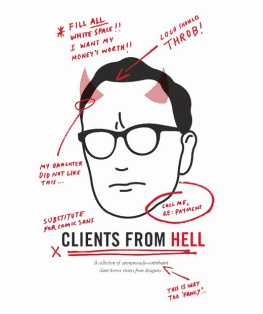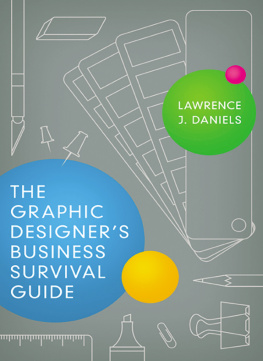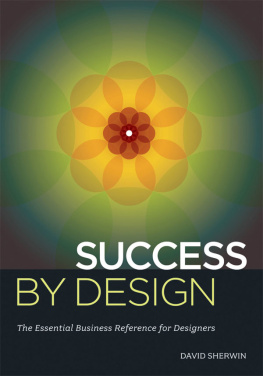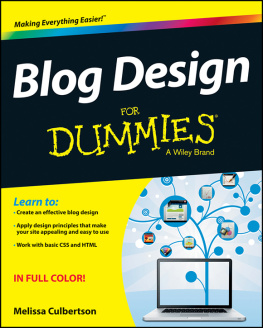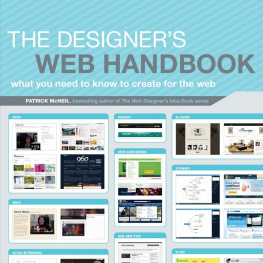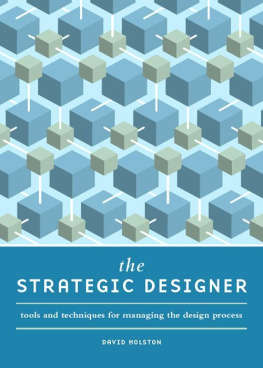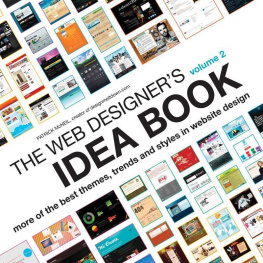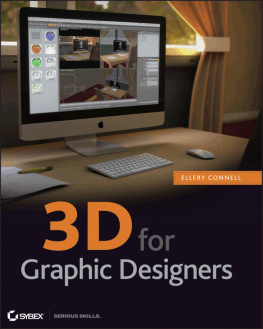
Sure, theyre not our words, but they might as well be. In truth we owe a certain amount of credit to Dante Alighieri, whose 14th-century Inferno provided the inspiration for understanding the 21st-century sleazeballs weve come to knowand loathas Clients from Hell.
In Dantes Hell, sinners inhabit concentric circles of increasing malfeasance, with those guilty of the least egregious sinsLimbo and Lustsuffering at the edges and those who have committed the most terrible sinsFraud and Betrayal, for exampleconsigned to the inner layers. While we make no such distinctionsin our minds all Clients from Hell are equally deserving of our contemptthere is some truth to Dantes characterization. For that reason, we find that the lesser sin of Limbo is incredibly well represented in the coming pageswe can (almost) feel sorry for these sinners since its (almost) possible to believe they know not what they do. And we should probably take some comfort in the fact that stories about the more dire offenses are far less common. But alas, we will not rest until weve exposed all sinners, regardless of their crimes, for what they truly are: Clients from Hell.
We pity the poor designer who endures any level of grief at the hands of a Client from Hell. All the more reason to hope that Dantes punishments hold true when Hell calls back its demon spawn, and that these worst of the breed will suffer a level of pain proportionate to that which theyve caused.
So, without further ado, prepare to be transported across the River Acheron

Most people who work in the design industry can agree that the clients we serve fall into one of two categories: good and terrible. True, this was but a pessimistic hunch when we launched the Clients From Hell blog in January 2010 , but ever since, weve seen overwhelming confirmation of this hastily-formed hypothesis. As I sit here writing this, we have well over a thousand submissions awaiting us, each detailing some surely-macabre client horror story.
If our contributors are anything like us, they probably had no idea just how common their situations were until they found our community of similarly disillusioned designers and creatives. Communal empathy is the backbone of the Clients From Hell blog, and though we launched hoping that others might commiserate with stories at least as bad as ours, we quickly discovered that theres always room to be outdone.
It all started on a Friday afternoon after a series of particularly difficult calls with three different clients. After hanging up with the last of the bunch, we were forced to consider an uncomfortable possibility: what if the reason we were consistently running into the same issues with different clients was that we were the difficult ones? After all, client management isnt exactly what we signed up for.
Feeling the sting of insecurity, we launched Clients From Hell in a desperate attempt to validate ourselves. Within a few months, wed received an overwhelming number of dispatches from designers around the world and a monthly readership of over a million people.
Our craft is a strange hybrid of art and technology, both of which are highly mystified and often intangible. After all, you cant pick up and handle a piece of web designits completely abstract. Weve never considered a clients lack of technical knowledge a sign of subpar intelligence; its a lack of common sense and an abundance of self-righteousness that really irks us. We also recognize that while we all think of ourselves as artists first and foremost, the day that we started accepting money for our work was the day that we entered the customer service industrya place that has been historically plagued by outrageous requests and malevolent behavior.
We hope that this book will give you some painfully honest insight into the reality of working with far too many clients enough, at least, to provoke some deep-rooted sense of community and empathy for your fellow designer soldiers. While Id like to say that the stories featured in this book are rarities, weve found that theyre all too commonplace. The stories weve included in this book belie any false conception that bad client relationships are simply the result of a little miscommunication; in fact, as youll read in many of these stories, any semblance of rational communication is often hard to come by. Its a rough world out there for a designer trying to make it the way he or she knows best. Now, on to the horror stories
Anonymous Designer

Hellish clients have an uncanny way of getting stuck in the nebulous space between should and shouldnt, decision and indecision, strategy and spontaneity And the list of polar purgatories goes on. They hold up projects forever without approving them, flood your inbox with a barrage of last-minute requests, and make a million irrelevant changes, all in an effort to compensate for their incompetenceat your expense.
The 14 Worst Words a Designer Will Ever Hear
Im not sure what I want, but Ill know it when I see it.
Alert the Internets
Make sure you tell the Googles of the world that the site will be launching soon so it places high in their results.
Gender Discrimination Against Mother Nature
We were wondering if you could possibly use snowflakes that look a little bit more masculine.
Totally Hip
While working on a project targeting tweens, our clients nixed all of our ideas (even though the focus group testing numbers were off the charts), and started throwing in their own ideas. The clients were all in their late 40s, and their concepts were pretty much cringe-worthy. When our boss politely mentioned to the clients that creative teams fresh out of school probably had a better grasp on youth market trends and interests, the client snapped back, I think I have a grasp on what youngsters find groovy.
No Shoes, No Socks, No Service
Upon presenting a design to a client, he removed his shoes, plopped his stockingd feet up on the desk and said, As you can see, you didnt knock my socks off.
My nonprofit client is really pushing for this tagline:
Learning should be for everyone. Everyone.
I would like to nominate it for the Overemphasis of the Year award. Overemphasis of the Year award.
Dont Let the Terrorists Win
I put an icon that looked like an atom on a business application. Upon sharing it with the CEO who hired me to design it, I received some constructive feedback: Im worried about that icon. You know, because of Iran. It will make people think about their nuclear program.
Client: I love the website, but I cant look at it on my computer. Can you put it on a DVD, so I can go through it on my telly?
Me: Not really. A website isnt a movie and it wouldnt work on a DVD. You need to view it in a browser on your computer.
Client: Whats a browser?
Me: Its a program you use to view websites. Do you use Windows? You probably click the big blue e when you look at the web, right? Thats Internet Explorer, and its your browser.
Client: Oh, right, I thought that was the Internet?
Me: Well, yes, sort of Listen, Im not sure what the problem is. Why cant you view the site in your browser?
Client: My computer is switched off.
Pixel-nomics
Client: How big is the graphical header?
Next page
